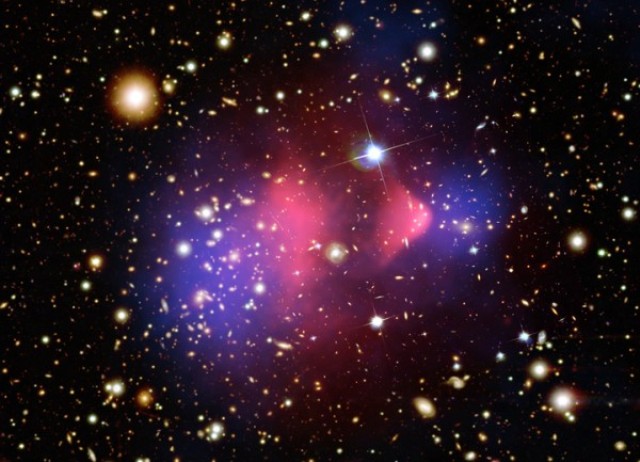Sep 1 2015
Astronomers at Georgia State University will debate leading scientific theories about dark matter, one of the biggest mysteries of the universe, at 7 p.m. Saturday, Sept. 5 in Speakers Auditorium at Georgia State’s Student Center East, 55 Gilmer St.

Presented by the Department of Physics and Astronomy, Professors Rachel Kuzio de Naray, an expert on galaxies, and Todd Henry, an expert on nearby stars, will face off in “Dark Matter: MACHOs versus WIMPs.” The audience will decide the winner.
Two leading theories propose that dark matter is made up of WIMPs (weakly interacting massive particles), a new type of exotic particle, or MACHOs (massive compact halo objects), clumps of normal matter such as planets and burned-out stars.
The event is free and open to the public. Guests in town for Dragon Con, the world’s largest science fiction and fantasy convention, are invited to attend.
Despite decades of study by physicists and astronomers, the nature of dark matter, an unseen material that makes up 27 percent of the universe’s matter and energy, remains unknown. Meanwhile, normal matter, which is understood by scientists and includes protons and electrons, only makes up 5 percent of all matter and energy in the universe.
“It’s really mysterious stuff,” said Misty Bentz, event organizer and assistant professor of astronomy at Georgia State. “We’ve known it’s been there for over 70 years, and we still have no idea what it is. If we look at a galaxy like the Milky Way galaxy that we live in and count up all the stuff that we can see in it, like stars, dust and planets, and then we look at the total amount of gravity that’s holding our galaxy together, it’s not even close to the amount of the material you need for that amount of gravitational force.
“Dark matter is this mysterious missing material that is apparently there and has a gravitational force just like any other material,” Bentz said. “We see its effects, but we don’t see it itself—sort of like the wind. The wind blows, and we see the effect of the wind, but you don’t actually see the wind itself.”
Source: http://www.gsu.edu/